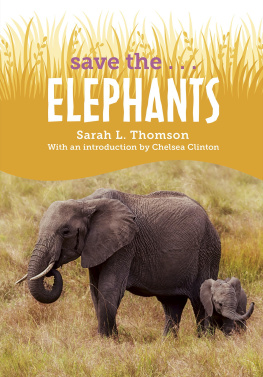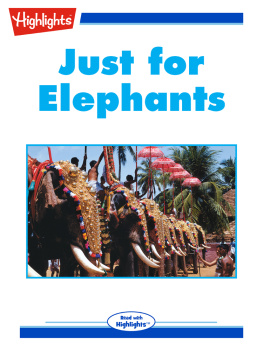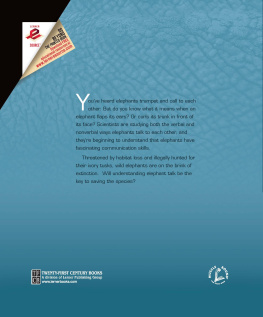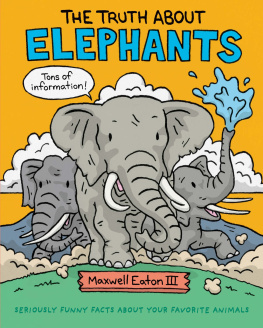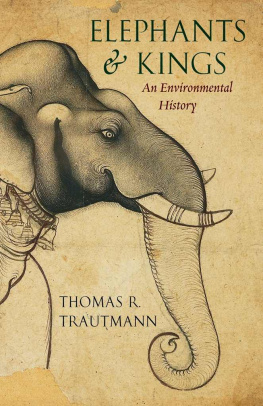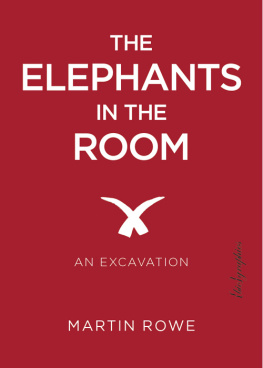Contents
Page List
Guide
Trinity University Press
San Antonio, Texas 78212
Copyright 2020 by Dale Peterson
All rights reserved. No part of this book may be reproduced in any form or by any electronic or mechanical means, including information storage and retrieval systems, without permission in writing from the publisher.
Book design by BookMatters
Cover design by Rebecca Lown
Cover image: MF012 / Shutterstock
Half title page image: Donvanstaden / iStock
Title page image: Donovan van Staden / Alamy Stock Photo
Last page image: Evgeny555 / iStock
Printed in Canada
ISBN 978-1-59534-866-1 paperback
ISBN 978-1-59534-867-8 ebook
Trinity University Press strives to produce its books using methods and materials in an environmentally sensitive manner. We favor working with manufacturers that practice sustainable management of all natural resources, produce paper using recycled stock, and manage forests with the best possible practices for people, biodiversity, and sustainability. The press is a member of the Green Press Initiative, a nonprofit program dedicated to supporting publishers in their efforts to reduce their impacts on endangered forests, climate change, and forest-dependent communities.
The paper used in this publication meets the minimum requirements of the American National Standard for Information SciencesPermanence of Paper for Printed Library Materials, ANSI 39.48-1992.
CIP data on file at the Library of Congress
24 23 22 21 20 | 5 4 3 2 1
To Iain Douglas-Hamilton, Cynthia Moss, Joyce Poole, Raman Sukumar, Andrea Turkalo, and all other heroes for their work on behalf of elephants
CONTENTS
DONALD J. COSENTINO, JOYCE POOLE, COLIN M. TURNBULL, AND JAN KNAPPERT
FRANKLIN EDGERTON
ARRIAN
ARISTOTLE
PLINY THE ELDER
T. H. WHITE
ROUALEYN GORDON-CUMMING
W. D. M. BELL
U TOKE GALE
J. H. WILLIAMS
P. T. BARNUM
CHARLES EDWIN PRICE
CAROL BRADLEY
SHUBHOBROTO GHOSH
IAIN AND ORIA DOUGLAS-HAMILTON
IAIN AND ORIA DOUGLAS-HAMILTON
JOYCE POOLE
CYNTHIA MOSS
CYNTHIA MOSS
JOYCE POOLE
CARL SAFINA
CYNTHIA MOSS AND JOYCE POOLE
KATY PAYNE
JOSHUA M. PLOTNIK, FRANS B. M. DE WAAL, AND DIANA REISS
KAREN MCCOMB, LUCY BAKER, AND CYNTHIA MOSS
KATY PAYNE
LAWRENCE ANTHONY
LYALL WATSON
BRYAN CHRISTY
THE ECONOMIST
YUKIO TSUCHIYA
VU HUNG
ROMAIN GARY
PREFACE
For more than three decades, I have written about animals and conservation. A few years ago, it happened that a major publisher was planning to produce a large-format book of beautiful elephant photographs along with an informative background text. I was asked to write the text.
Thus began my education in elephants, which was among the most transformative experiences of my life. First, I sought the education of direct experience: to see, hear, smell, touch, and if possible communicate with elephants. The books photographer, Karl Ammann, and I traveled to Asia and across Africa in order to come into direct contact with individuals of all three species: Asian, African savanna, and African forest elephants.
We met Asian elephants by inserting ourselves into a teak-logging operation, in the northwestern mountains of Myanmar, that still used trained elephants to do things in places expensive logging machines cannot go. We rode elephants for two days out to the logging camp, and then we rode elephants for two days in return, so I got to know them up close, discovering, for example, that an elephants tongue is about the size and texture of a well-padded softball glove. I found that elephants are approximately as surefooted as mountain goats, which explains a good deal about how Hannibal crossed the Alps with war elephants in 218 BCE. I saw that when an elephant slips on one foot, there are still three left over to recover with. I learned that nothing in the world takes precedence over a baby elephants needs.
In Africa, the photographer and I followed and took pictures of savanna elephants in the magnificent savannas of Kenya (at Samburu National Reserve and Amboseli National Park) and of forest elephants in the swampy ba (clearing) of Dzanga-Sangha National Park in the Central African Republic.
The three species (Elephas maximas in Asia, Loxodonta africana and Loxodonta cyclotis in Africa) are different enough in outward appearance that a nonexpert can soon learn to tell them apart, but individuals of all three are equally astonishing to see in real life. They have some almost magical qualities. They seem to exist behind their noses and ears, rather than behind their eyes as we people do, and they can move slowly enough to test the patience of most ordinary human beingsor run fast enough to challenge anyones fortitude. They can generate a deafening blast of sound, when the occasion calls for it, or they can be as quiet as a soft breeze for as long as they choose. They can appear when you least expect them, and they may disappear when you dont. They live in families with angelic babies, wildly playful youngsters, and fiercely protective moms, all guided by the sober leadership of grand matriarchs.
Among elephants most obvious features are their formidable size and strength. Their amazing intellectual, cognitive, and emotional qualities are less obvious and yet, I think, far more interesting and worth knowing about. And they are best learned not from direct contact but rather from indirect contact, through examining the writings of scholars, scientists, thinkers, and doers with elephant experience. Such an examination was, of course, the second part of my education in elephants, and it is what I recapitulate in this reader, which is, I believe, the only significant anthology of primary historical, cultural, and scientific writings about elephants.
I have included folktales from across Africa, sacred commentary from ancient India, historical recollections from Burma (now Myanmar), informed fiction from mid-twentieth-century Vietnam, childrens literature from post-World War II Japan, classical writings that originated in Greece and Rome, a piece translated from Latin by medieval scribes, exposs of abuse written by Indian and American journalists, colonial writings fresh from the pens of ferocious ivory hunters, and several samples of the scientific literature from the second half of the twentieth century. I have chosen all these selections based on literary and dramatic qualities as well their relevance in the long history of elephants, although it is, to be more accurate, the long history of elephants as people have seen and thought about them. The true history of elephantsdivorced as it must be from the bias and ignorance, greed and cruelty, hopes and dreams that so characterize our own specieshas yet to be told.

The Meaning of Elephants
DONALD J. COSENTINO, JOYCE POOLE, COLIN M. TURNBULL, AND JAN KNAPPERT




